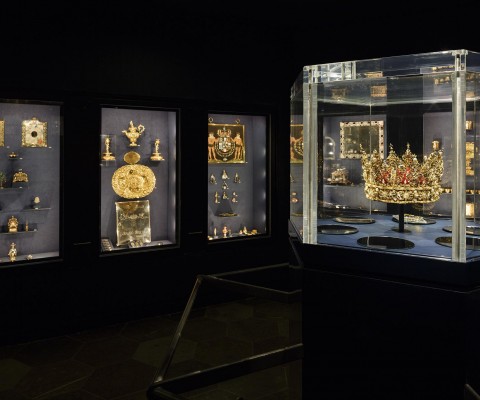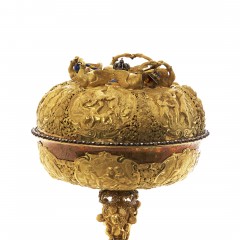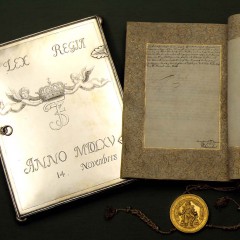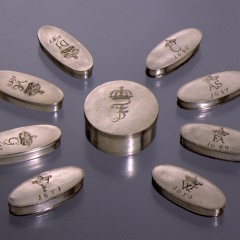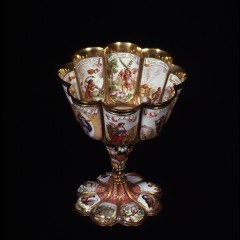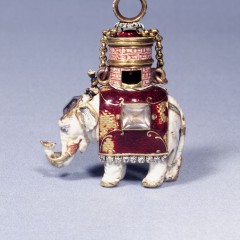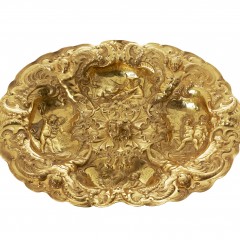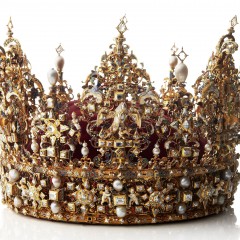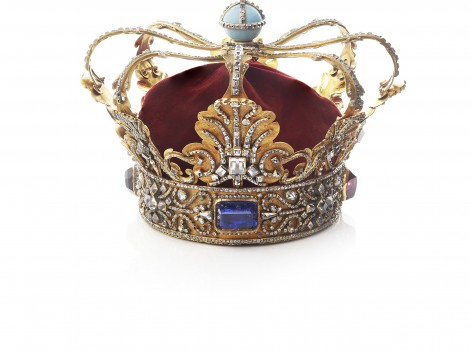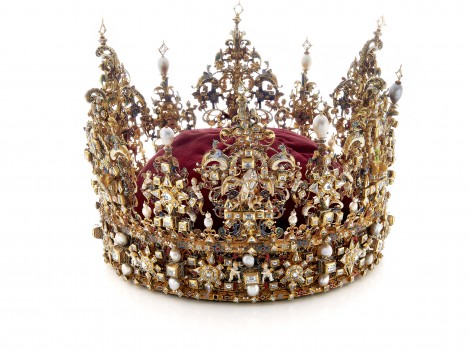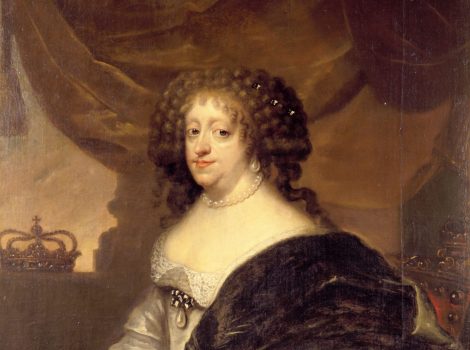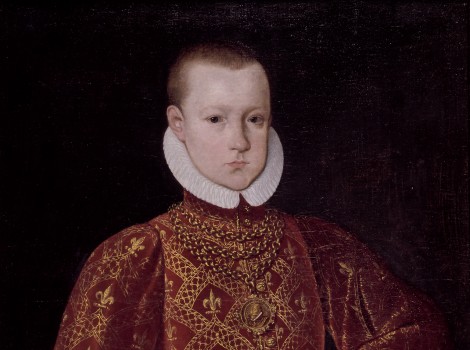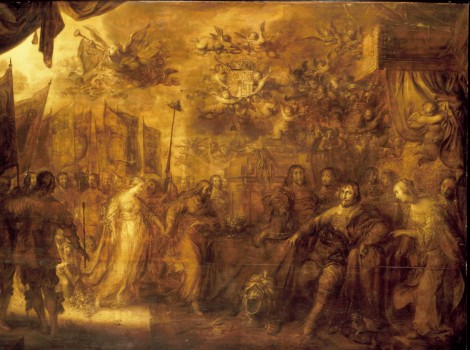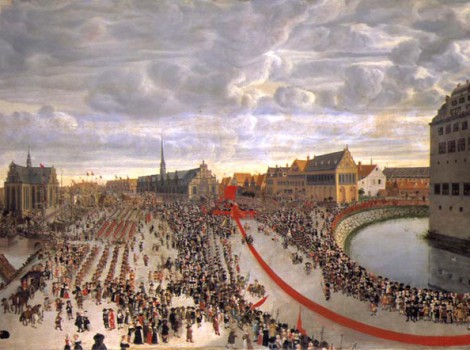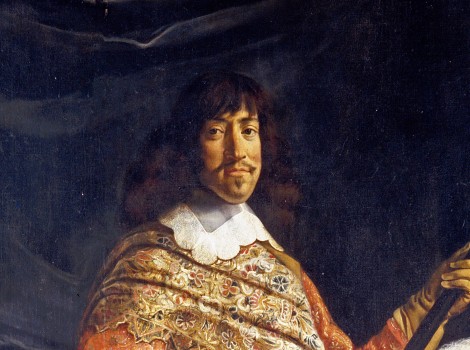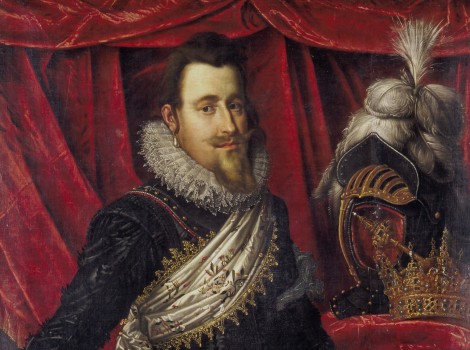H The Treasury
The most important item in the second section of the Treasury is Christian IV’s Crown, made for the coronation in 1596. At the time, fashion actually prescribed closed crowns. The fact that Christian received an old-fashioned open crown was probably because it was meant to symbolize the fact that he was the heir to the united Nordic countries, which Denmark had lead earlier. Nordic kings wore open crowns.
In the same section the baptismal set with with basin, pitcher and candlesticks, still used at christenings in the Royal House, can be seen. Until 1796 the names of the child and the father together with the time of birth were engraved, first underneath the basin, later on the attached plate.
The King’s private copy of the Royal Statutes, the constitution of the absolutist monarchy, is also displayed here. Among the stranger exhibits is a silver box containing Frederik III’s unbroken fetal membrane, or caul, thought to bring him luck. The same idea was behind the eight silver boxes containing the umbilical cords of his children; they supposedly protected against disease.

 Dansk
Dansk
 English
English
 Deutsch
Deutsch



